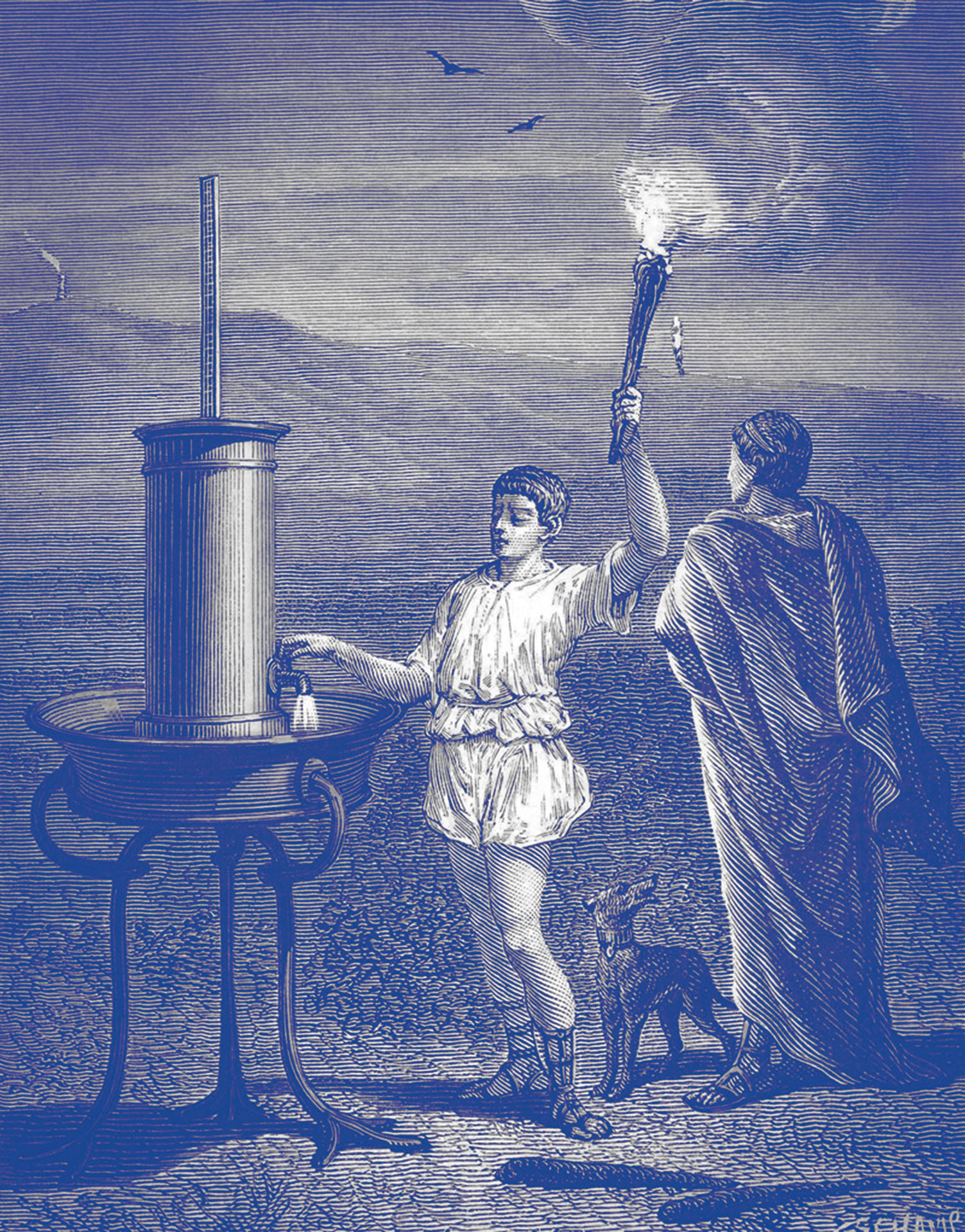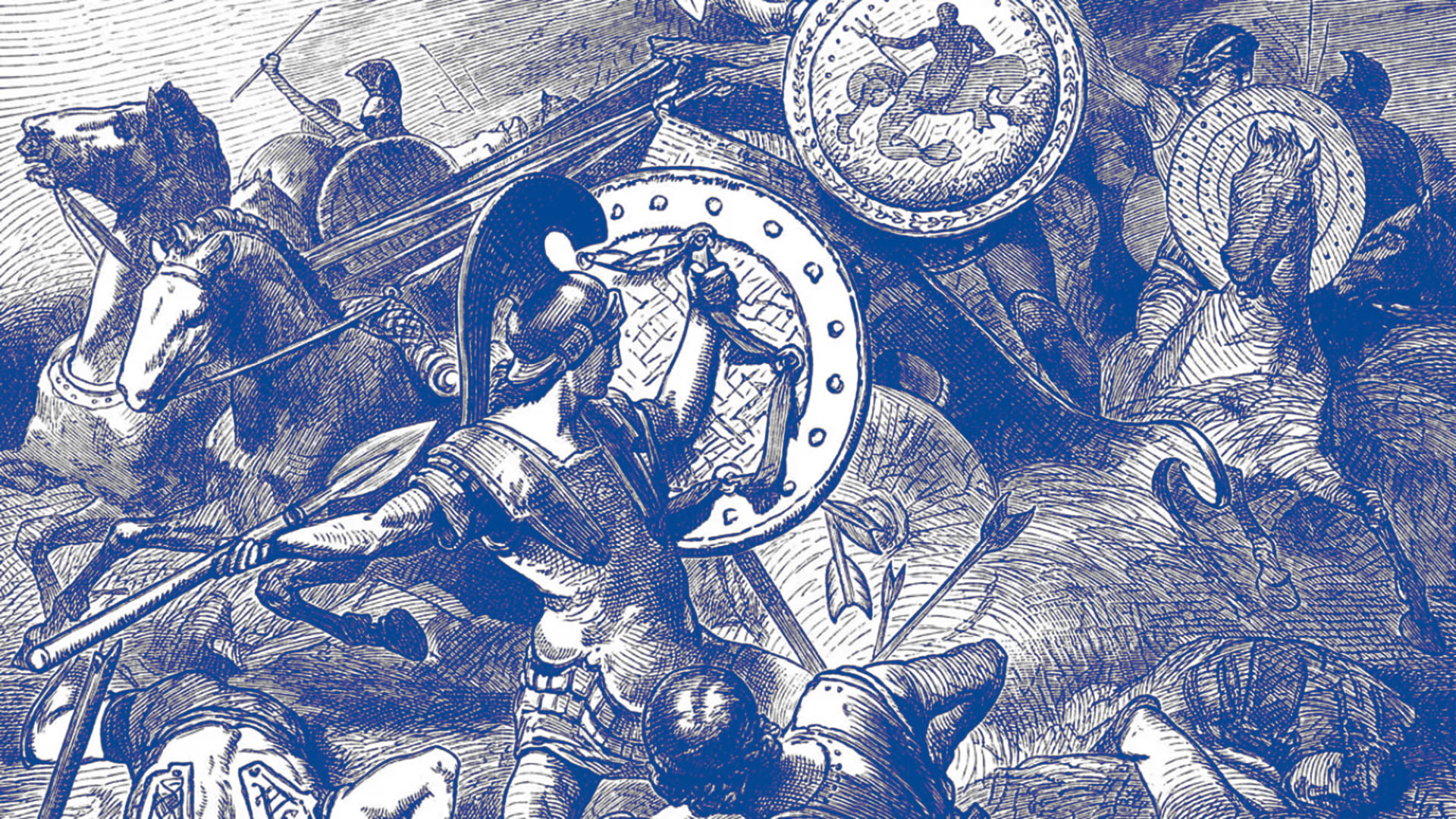The cipher of Aeneas

In the sacred texts, in particular in the Old Testament, three main secret writings can be found: the Atbash, the Albam and the Atbah.
The first cipher code, Atbash, was devised by the Jewish people. It consisted in overturning the alphabet, consequently the first letter became the last and the last the first and so for all the other letters of the alphabet.
Albam requires that the alphabet be divided into two parts and that each letter be replaced with the corresponding one from the other half.
Finally, the Atbah requires that the relationship be of a numerical type. The first nine letters of the alphabet are replaced in such a way that the sum of the letter to be replaced and the substituent letter equals ten. For the remaining letters of the alphabet a similar rule must apply with a sum equal to 28 in decimal.
Starting from these rudimentary cryptographic conceptual foundations, Aeneas Tacticus conceived and perfected the so-called “Aeneas cipher” (or “wheel”), a coding tool as simple as it is effective.
The cipher of Aeneas
 Between 390 and 360 BC Aeneas Tacticus, general of the Arcadian league, compiled the first treaty of figures whose XXI chapter deals with secret messages.
Between 390 and 360 BC Aeneas Tacticus, general of the Arcadian league, compiled the first treaty of figures whose XXI chapter deals with secret messages.
This describes a disk on the external area of which 24 holes were contained, each corresponding to a letter of the alphabet.
A thread, starting from a central hole, was wound passing through the holes of the successive letters of the text: upon arrival, once the letters were placed on the disk, the thread was unwound, marking the letters it indicates: the text was then to be read backwards. Vowels were often replaced by groups of dots.
Aeneas Tacticus
Aeneas Tacticus was an ancient Greek inventor and an author of military treaties probably in the 4th century BC.
Some scholars believe that Aeneas was a contemporary Peloponnesian general of Xenophon and identify him with Aeneas of Stymphalus, in Arcadia, mentioned by Xenophon among the commanders of the second Battle of Mantinea.
Xenophon recounts that Aeneas, in 366 BC, during the internal conflicts in the Peloponnese, gathered the army and the most influential citizens on the acropolis of Sicyon, also recalling the citizens exiled without a decree.
Still from his surviving work, we can deduce that he also fought in the Aegean and Asia Minor.
Telecommunications in battle
Polybius cites Aeneas as the inventor of a telecommunications system, the details of which were exposed in the larger work: the author describes it as an approximate system because it had the limitation of only allowing the transmission of preset messages.
The instrumentation, which must be in the possession of both the sender and the conferment, consisted of:
- Two containers filled with water and with a hole in the lower part;
- Two cork bases with a diameter smaller than that of the opening of the jars;
- Two auctions divided into sections showing, in each section, an agreed list of events (for example, “the knights arrive”, “the heavy infantry arrives”, “light infantry”, “infantry and cavalry”).
 The purpose of the transmission consisted in sending one of the pre-set messages written on the axis to the assignment. Proceed as follows:
The purpose of the transmission consisted in sending one of the pre-set messages written on the axis to the assignment. Proceed as follows:
- First, the plank inserted into the cork base;
- Then, the sender raised the torch and so did the delivery of the message;
- Both began to let the liquid out of the vase, with the consequent lowering of the cork base and of the rod integral with it;
- Finally, when the part of the shaft with the message that you wanted to communicate reached the height of the rim of the jar, the sender raised the torch, signaling to stop the flow of the liquid.
The receiver could thus identify which communication was in question among all those marked on the auction.
